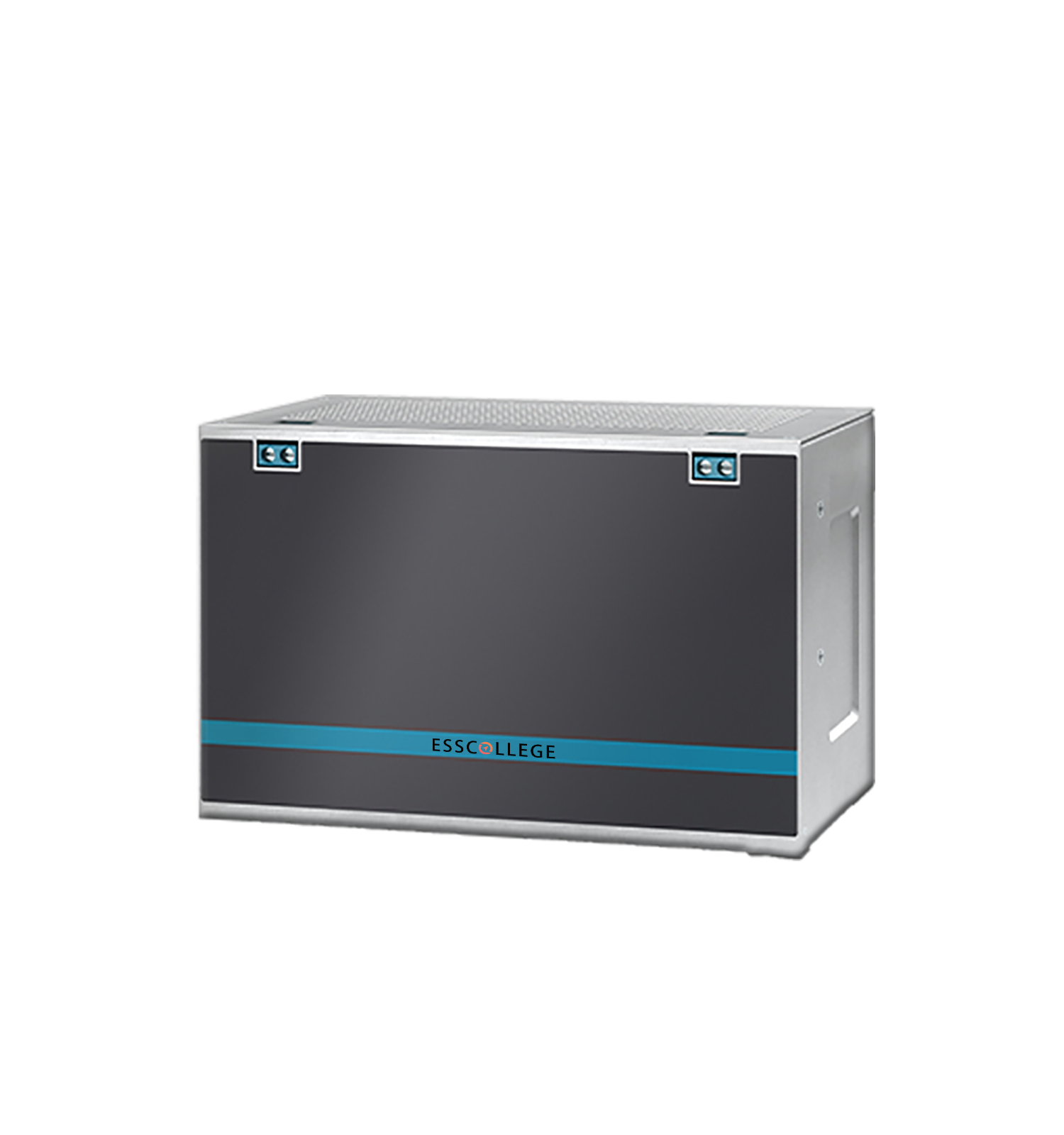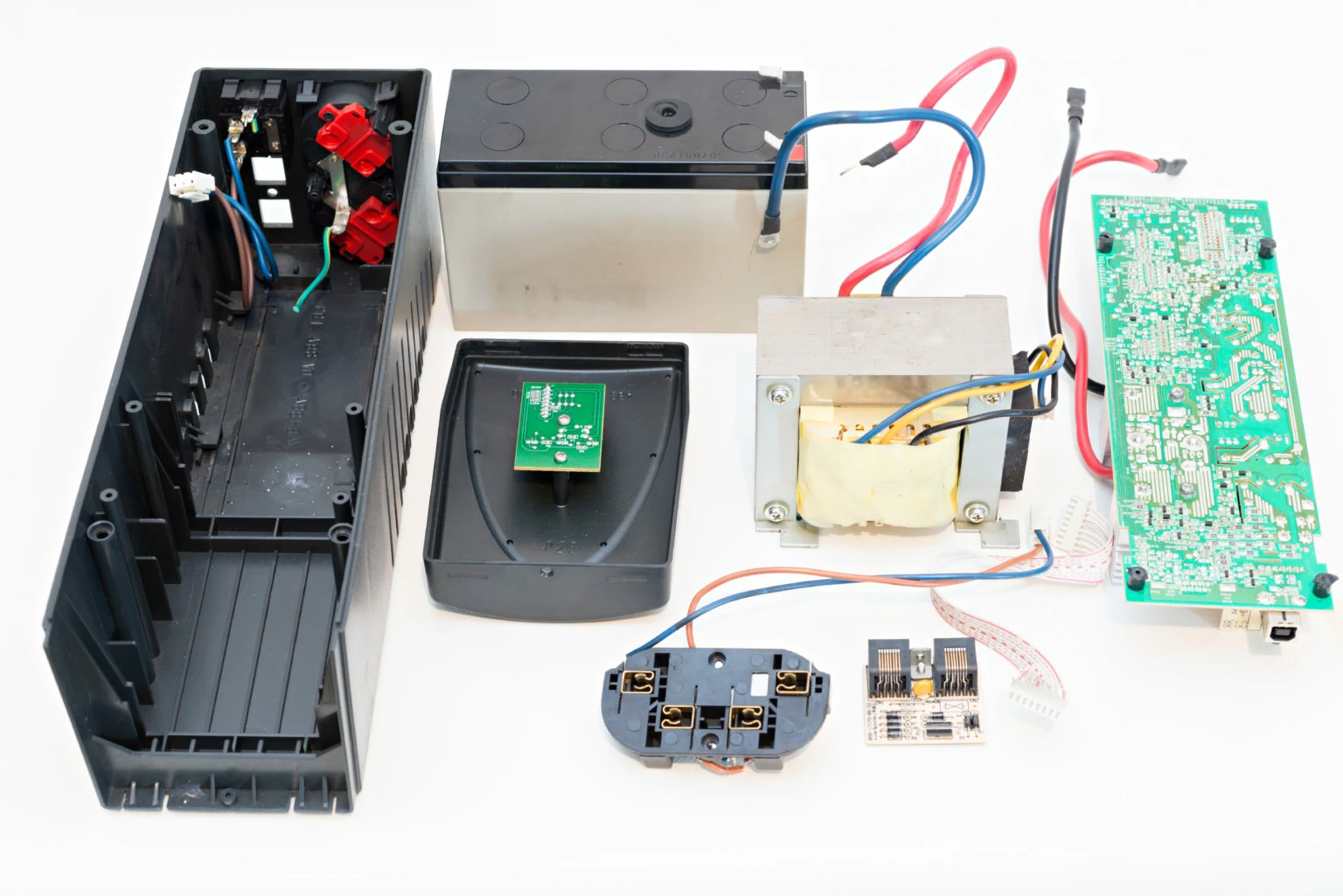UPS production process introduction As an important part of modern...
Battery cycle life and its influencing factors
The cycle life of an uninterruptible power supply (UPS) system refers to the service life of a battery during charging and discharging, usually measured by the number of charges and discharges. Cycle life is one of the key indicators to evaluate the long-term reliability and economy of UPS systems. This article will explore several factors that affect the cycle life of UPS batteries, including battery chemistry, depth of charge and discharge, charge and discharge rate, temperature, charging mode, and battery design and quality.
Main content
Battery chemical composition
The chemical composition of a battery directly determines its performance, stability and cycle life. Different types of batteries (such as lead-acid batteries, lithium-ion batteries, nickel-metal hydride batteries, etc.) have different chemical characteristics and application scenarios.
Lead-acid batteries: Lead-acid batteries have a relatively short cycle life, generally between 300 and 1000 cycles, and are affected by sulfation and electrode aging. Despite its low cost and simple structure, its life is significantly reduced under high loads or deep discharges.
Lithium-ion batteries: Lithium-ion batteries usually have a long cycle life, which can theoretically reach more than 2000 times, and are suitable for deep discharge. Its life is affected by electrolyte and electrode materials, and high-quality lithium battery materials can significantly extend the service life.
Depth of charge and discharge
Depth of Discharge (DoD) is the degree to which a battery is discharged to its capacity. The depth of charge and discharge is an important factor affecting the cycle life.
Shallow cycle: Using a shallow depth of charge and discharge (such as 30%-50%) will effectively extend the cycle life of the battery. Because in shallow discharge, the chemical process of the battery is relatively mild, reducing the wear on the internal structure of the battery.
Deep cycle: Relatively speaking, deep discharge (e.g., more than 70%) will accelerate the loss of the battery, resulting in a shortened cycle life. Therefore, for UPS systems, deep discharge should be avoided as far as possible when designing applications to ensure the sustainability of battery use.
Charge and discharge rate
The charge and discharge rate also has a direct impact on the cycle life of UPS batteries. C-rate is an important parameter to describe the rate of charge and discharge.
Low discharge speed: The use of low charge and discharge rate can reduce the internal heating and polarization effect, thereby extending the cycle life of the battery.
High-speed discharge: high-speed charge and discharge may lead to battery heating and internal chemical reaction instability, accelerate battery aging and performance decline. Therefore, when using UPS, it is recommended to select the appropriate charge and discharge rate according to the battery type and specifications to optimize its cycle life.
Temperature
Temperature is an important environmental factor that affects the battery cycle life, and too high or too low temperature will adversely affect the UPS battery.
High temperature: The high temperature environment will accelerate the chemical reaction in the battery, although the short-term performance of the battery may be improved, but long-term high temperature will lead to battery corrosion and chemical decomposition, accelerating the aging process.
Low temperature: Low temperature will cause the battery reaction rate to decrease, affecting discharge performance and charging efficiency, but the impact on cycle life is relatively limited. In order to optimize the performance of the battery, it is recommended to set the appropriate temperature control measures in the UPS to ensure that the battery operates within the best operating temperature range.
Charging method
The choice of charging method will have a significant impact on the cycle life of the UPS battery. Common charging methods include constant current charging, constant voltage charging and pulse charging.
Constant current charging: This method provides a constant current when the battery voltage is low, which is suitable for fast charging situations, but if the charging current is not controlled well, it may lead to overcharging of the battery and affect the life.
Constant voltage charging: By maintaining a constant voltage charging, suitable for lead-acid batteries, can extend the service life of the battery. Reasonable charging strategy and time arrangement can reduce the heat load of the battery.
Pulse charging: The pulse charging method has the advantages of reducing heat and reducing battery polarization, which can effectively extend the cycle life.
Battery design and quality
The design and manufacturing quality of the battery directly affect its cycle life. High quality battery design can improve battery durability and performance.
Material selection: The use of high-quality materials can significantly improve the durability and cycle life of the battery. For example, wear-resistant electrode materials and efficient electrolyte formulations can lead to better cycling performance.
Manufacturing process: The fine manufacturing process can reduce the defects inside the battery and improve the overall performance and consistency of the battery. In addition, good monitoring and testing measures also ensure that the battery is in the best condition when it leaves the factory.
CONCLUSION
The cycle life of a UPS battery is affected by a variety of factors, including battery chemistry, depth of charge and discharge, charge and discharge rate, temperature, charging method, and battery design and quality. Understanding and optimizing these factors when selecting and using UPS power supplies can improve battery reliability, performance, and service life, thus ensuring that the UPS system provides stable power support at critical times.

UPS BATTERY SERIES
UPS (Uninterruptible Power Supply) batteries are an important component of power supply systems designed to provide stable power support for electronic devices.
Extended reading
UPS Application Scenarios
UPS application Scenarios Uninterruptible power supply (UPS) is an effective...
THE ESSC Brand promise
Global supply
Our products sell well all over the world, covering many countries and regions, through the global logistics network, to provide customers with convenient purchasing experience.
Rigorous quality
We adhere to the highest quality control standards to ensure every product meets industry regulations and customer expectations, earning trust through consistent excellence.
Excellent service
With a customer-centric approach, we provide prompt responses, professional support, and personalized services, aiming to deliver the best user experience and long-term value.





